“It has a lot of meaning to a lot of people” – Tim Easley on The Moon
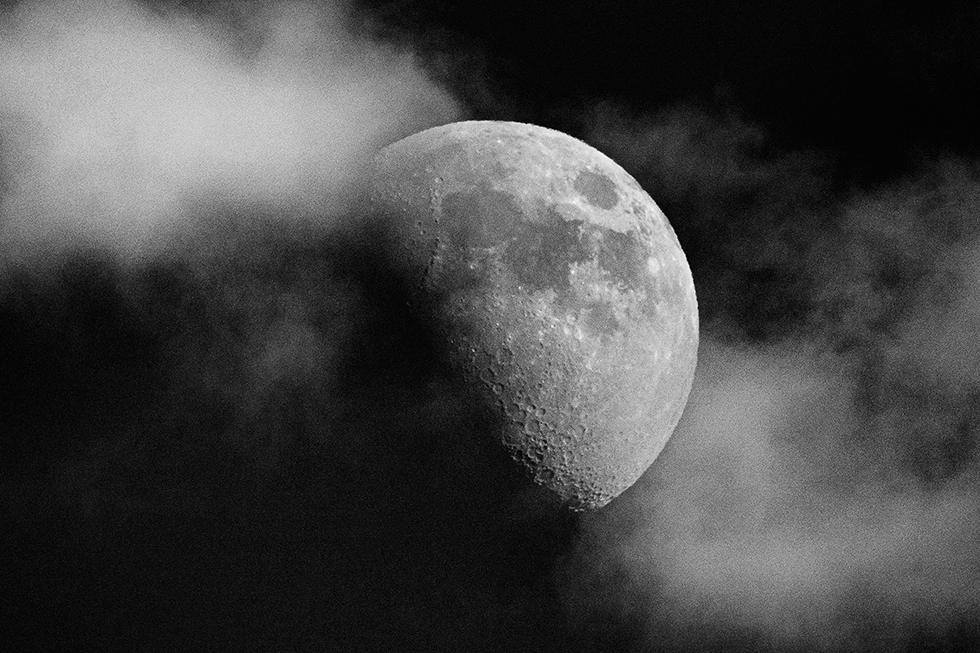
The Moon, for so long unknowable, has inspired much myth and folklore. With science and space travel bringing us, at least metaphorically closer, interest has – arguably – intensified. We caught up with award-winning designer Tim Easley, whose lifelong fascination with our near neighbour has inspired a new book…
Whether it’s a result – or symptom – of lockdown, we’re not sure, but lately we’ve increasingly been looking upwards at the night sky. While it’s a thrill to be able to pick out constellations, rarely do you see anything as spectacular or haunting as the Moon. Whether it be shrouded by cloud, emitting a lunar corona, or appearing in classic – from the movies – crescent shape, it is something to behold. People have been drawn to our nearest neighbour for as long as time itself, and it has inspired artistic responses through the ages. Its allure hasn’t waned. This is evidenced by the release of a new book dedicated to the celestial body: The Moon. A Photographic study from a distance of 0.002569 astronomical units. We spoke with its author, the illustrator, designer and photographer, Tim Easley.
The Double Negative: Please tell us about the photographs in the book.
Tim Easley: Although the Moon looks pretty big in the sky, as soon as you take your phone out to get a quick snap of it, you’ll soon realise how little of the frame it takes up. I’ve been into photography for quite a few years and have slowly built a nice setup that includes a couple of long lenses (we’re talking 400mm-800mm), which is what I use to take most of my Moon photos nowadays. That, along with a decent amount of cropping, means I can usually fill up the frame with the Moon. However, I’m still a big fan of much wider shots and not everything needs to be crystal clear – I prefer a photo that brings out an emotional response rather than one that belongs in a scientific journal.
TDN: Can you talk us through some of those you’ve shared with us?
This one (top) is actually a daytime shot, believe it or not. I processed it so that the sky was under-exposed and made the Moon stand out a bit more.
This (below) was a slightly cloudy night, but was actually taken through a tree that was rudely in the way of my view, which is why there are some random patterns of shadow on the image. I love when something is interacting with the Moon or making it look a little different, especially when it’s not obvious what it is.
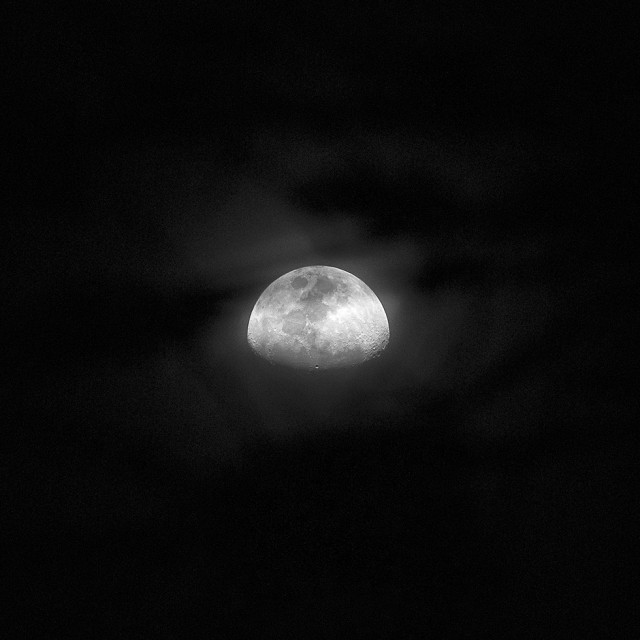
I love this one (below) even though the Moon is out of focus. It was taken through a window on a rainy night, and I just love how emotive it is. It reminds me of looking through rainy windows at night time as a kid.
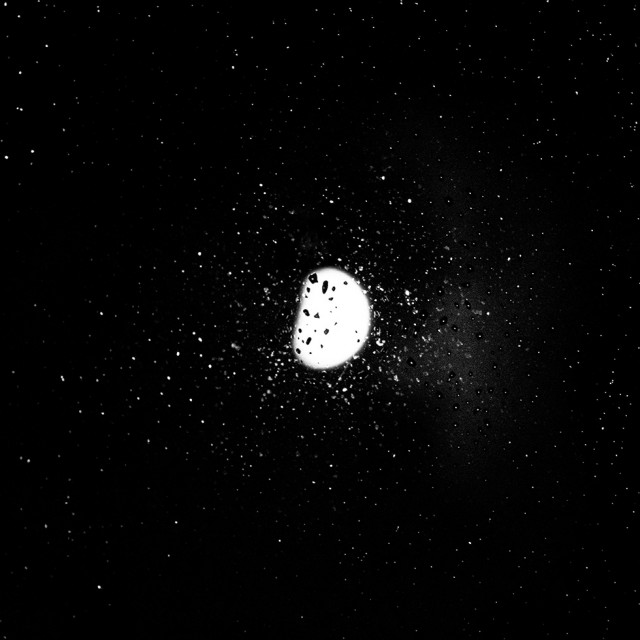
This next one is a good example of a composite image. The Moon is extremely bright compared to the stars, so it’s practically impossible to take a photo of both at the same time – the Moon would either be a big white circle, or the stars would be invisible, so you have to take two images and combine them in Photoshop to achieve the same range that your eyes can see.
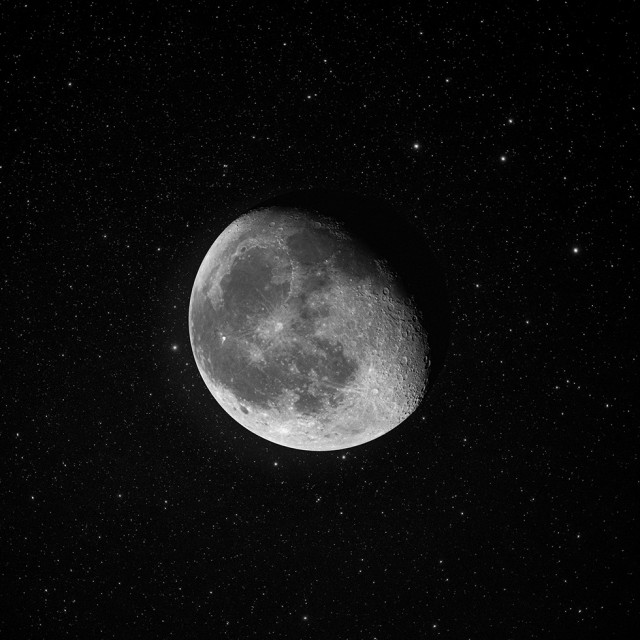
Again, I’m a big fan of blurry images of the Moon. Sometimes it’s nice to leave something to the imagination, and I think that the leaves help you imagine where you might be if you were the one taking the photo.
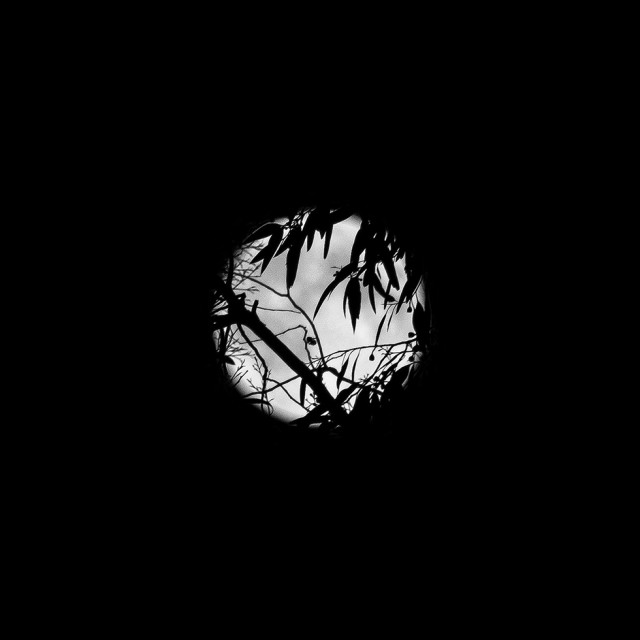
TDN: Tell us about the distance from which they were taken, which also serves as the subtitle to the book (‘a photographic study from a distance of 0.002569 astronomical units’).
TE: An astronomical unit is the measurement of the distance from the Earth to the Sun, and it’s how distances in the solar system are measured, so 0.002569 astronomical units is the average distance from the Earth to the Moon.
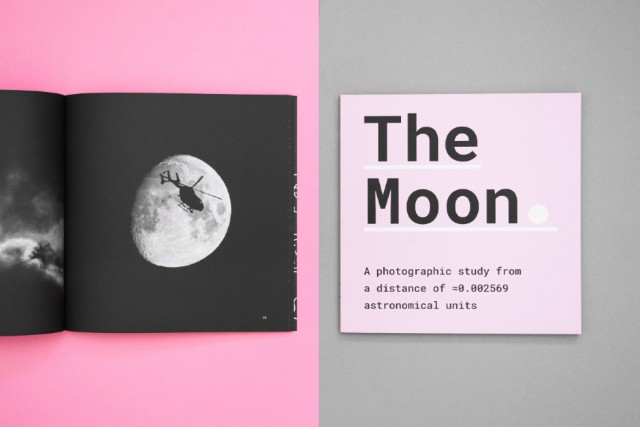
TDN: We know you as a designer first and foremost – was this project a nice opportunity to combine twin passions?
TE: I love being able to both create the content and design and framework for that content – besides just being great fun, it means that I’m more able to present everything exactly as I’d like to. I can also change things a million times or completely scrap a concept and try another, without annoying the designer (too much!), which is another advantage.
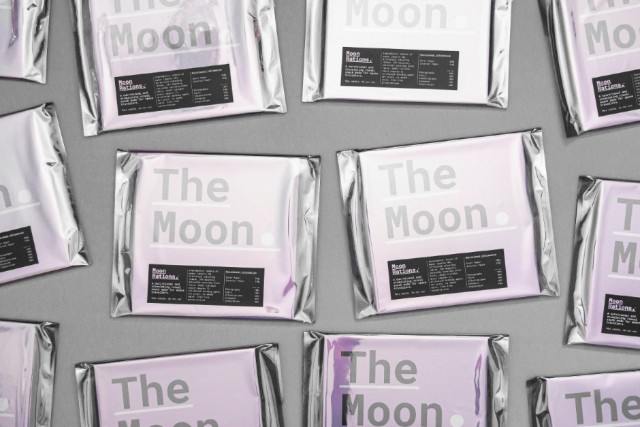
TDN: Tell us about some of your creative choices in making the publication.
TE: I love books about space or the Moon, but they’re often designed with certain audiences in mind, so although they’re interesting to read, they’re not always great to look at – the exception being the large collection of 70s/80s space books that I own, which are all accidentally amazing! I wanted to make this book nice to look at, even if you’re not really into the Moon, and maybe more people would see how fascinating a subject it is. I chose pink as the single colour for the book because I thought it contrasted well with the subject, and I packaged the book in an anti-static bag to resemble space rations.
TDN: Why do you think we remain so fascinated by the Moon?
TE: I think it’s just always there and still pretty mysterious. It has a seemingly random path through the sky, it changes shape, and it has a lot of meaning to a lot of people.
TDN: Where does your own interest stem from?
TE: Personally, I grew up in the city, so the Moon was nearly the only object that I could see clearly in the night sky, it’s been a constant throughout my life, and it’s the celestial body that I’ll most likely be able to visit some day!
As told to Mike Pinnington
The Moon. A Photographic study from a distance of 0.002569 astronomical units, is available now
All images by and courtesy of Tim Easley





